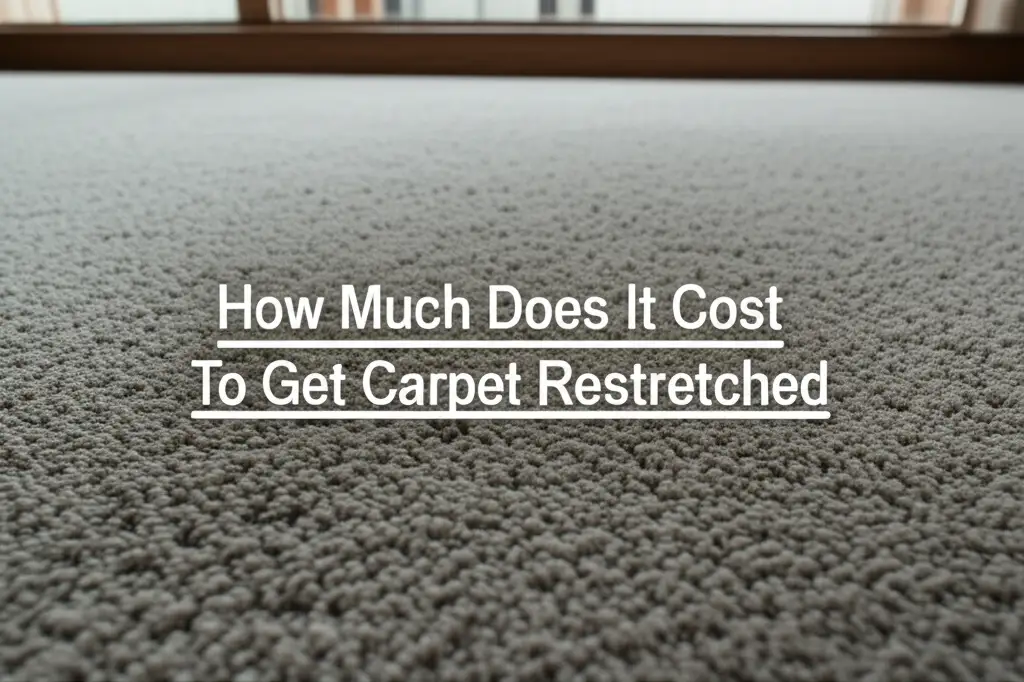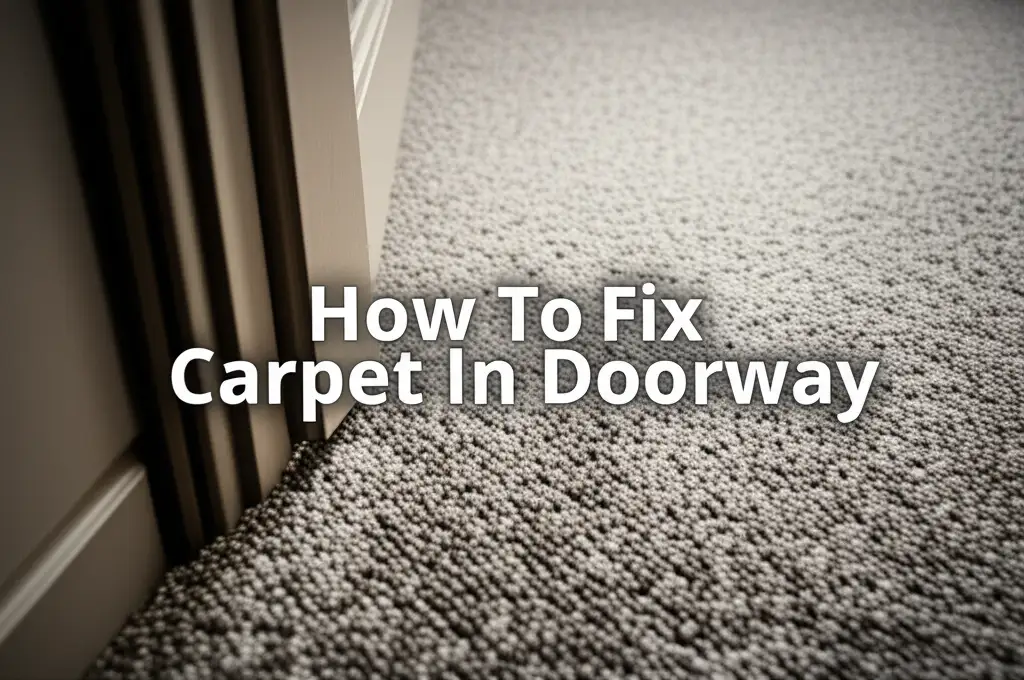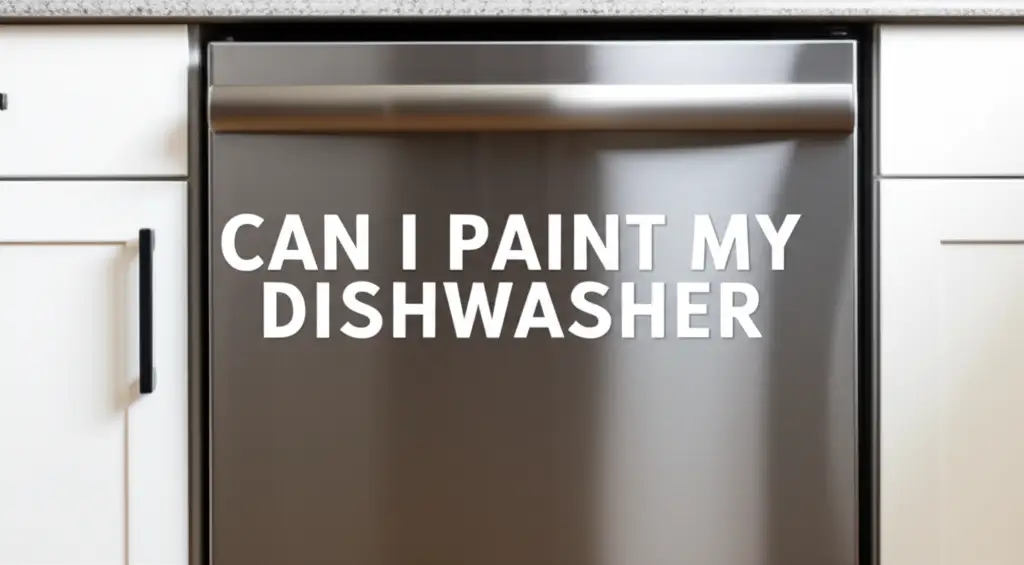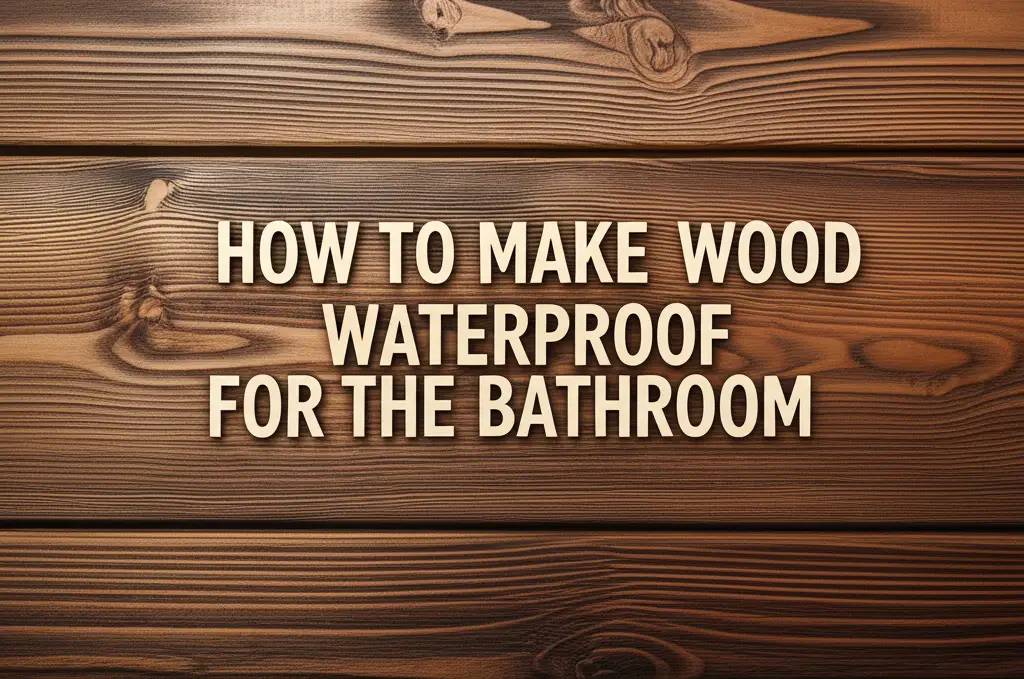· Elira Thomsen · Home Improvement · 15 min read
How Much Does It Cost To Get Carpet Restretched

Carpet Restretching Cost: A Complete Guide
Have you noticed unsightly wrinkles or waves appearing in your carpet? These ripples are not just a nuisance; they can also pose a tripping hazard and shorten your carpet’s lifespan. Getting your carpet restretched is a smart way to restore its appearance and functionality. I have seen many homes benefit from this simple repair. Understanding the associated costs helps you budget for this important home improvement.
This article explores how much does it cost to get carpet restretched. We will cover the main factors influencing pricing, from room size to the severity of the damage. We will also discuss the benefits of professional service versus DIY methods. Finally, I will share tips on choosing the right professional and maintaining your carpet after restretching. Let’s make your carpets smooth and safe again.
Takeaway
- Carpet restretching costs vary based on room size, carpet type, and damage severity.
- Professional services typically range from $100 to $300 per room, with minimum fees.
- DIY restretching can save money but carries risks without proper tools or experience.
- Restretching extends carpet life, improves appearance, and prevents tripping hazards.
- Always get multiple quotes and verify a professional’s credentials.
How Much Does It Cost To Get Carpet Restretched?
The typical cost to get carpet restretched ranges from $0.50 to $1.00 per square foot, or an average of $100 to $300 per room. Most professionals also have a minimum service fee, which can be $75 to $150, regardless of the area size. This cost accounts for labor, specialized tools, and the time required to complete the job effectively.
Understanding Carpet Restretching: Why It’s Essential
Carpet restretching is a process that tightens loose carpet. Professionals use specialized tools to pull the carpet taut. This removes wrinkles, buckles, and ripples. These issues often appear over time due to wear, humidity changes, or improper installation. I have seen how common this problem is.
Loose carpet is more than just an eyesore. It creates tripping hazards in your home. Ripples can also cause uneven wear on the carpet fibers. This leads to premature deterioration and a shorter carpet life. Restretching extends the life of your carpet. It also makes your home safer and more visually appealing.
Many factors contribute to carpet loosening. Heavy foot traffic is a common cause. Furniture moving can also pull the carpet out of place. High humidity can make carpet fibers expand, causing them to loosen when humidity drops. Even a sub-par initial installation can lead to problems later. My experience shows that quality installation prevents many issues.
Ignoring loose carpet can lead to bigger problems. The carpet can become permanently damaged. It might even need full replacement much sooner than expected. Restretching is a cost-effective solution. It prevents these expensive future repairs. This simple service keeps your carpet looking new.
Investing in restretching protects your home. It maintains the aesthetic value of your flooring. It also ensures a safer environment for your family. This process is a wise decision for any homeowner. It preserves your carpet investment for years to come.
How Much Does It Cost To Get Carpet Restretched: Core Factors
Many elements influence the final cost of carpet restretching. Understanding these factors helps you estimate expenses accurately. My clients often ask about these variables. The size of the area is a primary factor. Larger rooms or multiple areas mean more work and higher costs.
Carpet type also plays a role. Some carpets are harder to stretch than others. For example, Berber carpet is dense and can be challenging. Plush carpets are generally easier to work with. Different materials react differently to the stretching process. This impacts the time and effort required.
The severity of the damage significantly affects pricing. Minor ripples are easier to fix. Large buckles or widespread loosening require more intensive work. Extensive damage may involve re-tacking the carpet or replacing tack strips. This adds to the labor and material costs. Addressing issues early can save you money.
Furniture moving can increase the price. If the carpet repair technician needs to move heavy furniture, they might charge an additional fee. Some companies include this service. Others charge extra for the labor. Clarify this when you get a quote. Preparing the room yourself can reduce costs.
Location also impacts cost. Prices vary by region and local market demand. Urban areas often have higher labor costs than rural ones. Always get local quotes. This helps you understand average prices in your area. Consider the overall condition of your carpet when getting quotes. An older carpet might present different challenges. For example, if you are wondering how much should 20 year carpet cost compared to new, consider that very old carpets might be too brittle for effective restretching, making replacement a better option. Knowing your carpet’s age helps you make an informed decision.
Average Carpet Restretching Costs by Room Size
The price for carpet restretching often depends on the size of the room. Service providers typically quote per room or per square foot. Most professionals also set a minimum service fee. This covers their travel and setup time. I have found this to be standard practice.
For a small room, like a hallway or a bedroom under 150 square feet, you might pay $100 to $175. This typically covers basic restretching. It assumes there are no major obstacles. Many companies have a base fee for a single small area. This minimum charge ensures their trip is worthwhile.
Medium-sized rooms, such as a living room or a larger bedroom between 150 and 300 square feet, generally cost $175 to $250. These spaces require more time and effort. The technician uses a power stretcher for effective results. This tool ensures an even pull across the entire area. My advice is to clear the room as much as possible beforehand.
For large areas or multiple rooms, costs can range from $250 to $500 or more. An entire house or a very large open-concept living space falls into this category. Some companies offer discounts for stretching multiple rooms. Always ask about package deals. This can save you money on a bigger job.
Costs per square foot usually fall between $0.50 and $1.00. This rate is helpful for large, open areas. It provides a clear pricing structure. However, minimum fees often apply even with square footage pricing. Always ask for a detailed quote. This prevents surprises later.
Regional variations exist. Contractors in high-cost-of-living areas charge more. Get at least three quotes from different companies. Compare their pricing and services offered. This helps you find the best value for your carpet restretching needs. A clear quote details all included services.
DIY vs. Professional Carpet Restretching: Weighing Your Options
When your carpet needs restretching, you have two main choices: do it yourself or hire a professional. Each option has its own costs and benefits. I often see people debate this decision. Understanding the pros and cons helps you make an informed choice.
DIY restretching can seem appealing for cost savings. You can rent specialized tools like a knee kicker or a power stretcher. A knee kicker is good for small areas or minor ripples. A power stretcher provides a much stronger, more even pull. It is essential for larger rooms or significant buckling. Rental fees for these tools can range from $20 to $50 per day.
However, DIY restretching carries significant risks. Without proper experience, you might damage your carpet. Incorrect stretching can lead to new ripples or tears. You could also over-stretch the carpet. This can pull it away from the walls. Mistakes often lead to more costly professional repairs later. Learning the correct technique takes time. It requires precision and patience.
Professional carpet restretching offers many advantages. Technicians have extensive experience and the right tools. They use a power stretcher for superior results. This tool ensures a uniform and tight stretch across the entire carpet. Professionals can also identify underlying issues. They fix problems you might miss. This expertise leads to a longer-lasting repair.
The main downside of professional service is the cost. It is higher than DIY. However, the investment often pays off in quality and peace of mind. Professionals usually guarantee their work. This provides a safety net if issues arise later. They complete the job efficiently and correctly.
Consider the age and condition of your carpet before deciding. If you are wondering does cleaning 10 year old carpet work, also consider that older carpets might be more brittle. They can be more prone to damage during stretching. A professional can assess whether your older carpet can withstand restretching. They can advise if replacement is a better option.
Ultimately, the choice depends on your budget, skill level, and the severity of the carpet issue. For minor ripples in a small area, DIY might be feasible. For significant buckling or larger rooms, hiring a professional is usually the wiser investment. It ensures a high-quality, durable repair.
Identifying the Need for Carpet Restretching
Recognizing when your carpet needs restretching is crucial. Early detection can prevent more serious damage. I encourage homeowners to regularly inspect their carpets. Several signs indicate that your carpet is loose. These signs are usually easy to spot.
The most common indicator is the presence of visible wrinkles or waves. These can appear as small ripples or large, noticeable humps. They often form in high-traffic areas. They can also show up near doorways or furniture. These wrinkles occur when the carpet fabric expands or shifts. The carpet then loses its tension.
Another sign is carpet buckling. This happens when the loose areas become more pronounced. The carpet may bunch up significantly. This creates a distinct raised area. Buckles are not just unsightly; they are also a major tripping hazard. They can make walking across the room unsafe.
You might also notice unevenness when vacuuming. Your vacuum cleaner may snag or drag on certain spots. This is due to the loose carpet bunching up. It makes cleaning less effective. It also puts more strain on your vacuum. Smooth vacuuming indicates proper carpet tension.
Poor initial installation can lead to early signs of looseness. If the carpet was not stretched properly during installation, ripples can appear within a few years. Changes in humidity levels also play a role. High humidity causes carpet fibers to expand. When humidity drops, the fibers contract, but the carpet might not return to its original tension.
It is important to act quickly once you notice these signs. Ignoring loose carpet can lead to permanent damage. The carpet fibers can wear down unevenly. This creates bald spots or tears. In some cases, the carpet might even delaminate. This means the backing separates from the fibers. At that point, restretching might not be possible. A full replacement would be necessary. Early intervention saves money and extends your carpet’s life.
Choosing a Professional for Your Carpet Restretching
Selecting the right professional is key to a successful carpet restretching job. A skilled technician ensures your carpet looks great and lasts longer. I always advise homeowners to do their homework. Finding a reputable company prevents future headaches.
Start by seeking recommendations. Ask friends, family, or neighbors who have had similar work done. Local community groups or online forums can also provide valuable insights. Word-of-mouth referrals are often reliable indicators of good service. Personal experiences give you real feedback.
Next, get multiple quotes. Contact at least three different carpet repair companies. Provide them with details about your carpet’s condition and the area size. A reputable company will offer a free, no-obligation estimate. Some may even provide an on-site inspection. This allows them to assess the job accurately.
When comparing quotes, do not just look at the price. Consider what each quote includes. Does it cover furniture moving? Are there any hidden fees? Ask for a detailed breakdown of costs. This ensures transparency. It helps you avoid unexpected charges later.
Check for proper credentials and insurance. Ensure the company is licensed and insured. This protects you in case of accidents or damage during the work. Ask about their experience in carpet restretching specifically. A company specializing in carpet repair is often a better choice. They have the right tools and expertise.
Read online reviews and testimonials. Websites like Google, Yelp, or Angie’s List offer customer feedback. Look for consistent positive reviews regarding professionalism, quality of work, and customer service. Be wary of companies with many negative complaints. Pay attention to how companies respond to criticism.
Finally, ask about warranties or guarantees. A good professional will stand behind their work. They should offer a warranty on their restretching service. This gives you peace of mind. It ensures they will address any issues that arise shortly after the job. A clear warranty statement protects your investment.
Maximizing Your Investment: Carpet Care After Restretching
Getting your carpet restretched is an excellent investment in your home. To ensure your carpet stays smooth and beautiful, proper post-restretching care is essential. I always provide my clients with guidance on how to maintain their newly stretched carpets. A little effort goes a long way.
First, give the carpet some time to settle. Avoid heavy foot traffic immediately after restretching. This allows the carpet fibers and backing to fully adjust to their new tension. Your technician will usually advise on the ideal waiting period. It is often just a few hours.
Regular vacuuming remains crucial. Use a vacuum cleaner with strong suction. This lifts dirt and debris effectively. Be gentle around the edges of the room where the carpet meets the walls. Avoid aggressive movements that could pull the carpet loose again. Consistent vacuuming prevents dirt buildup. Dirt can contribute to fiber wear.
Address spills and stains promptly. The quicker you clean a spill, the less likely it is to set. Use appropriate carpet cleaning solutions and techniques. Blot, do not rub. Rubbing can damage carpet fibers. It can also disrupt the stretched tension. For general carpet care, you might wonder does vinegar change carpet color. While vinegar is a good natural cleaner for many stains, always test it on an inconspicuous area first to ensure it does not affect your specific carpet type.
Consider professional carpet cleaning periodically. Deep cleaning removes embedded dirt that regular vacuuming misses. This maintains the carpet’s appearance and hygiene. Some people wonder does steam mop work on carpet. While some steam mops have carpet glider attachments, they are generally not recommended for deep cleaning, as they can sometimes push moisture too deep into the carpet and padding. Professional hot water extraction is usually the best method.
Finally, take precautions to prevent future ripples. Avoid dragging heavy furniture across your carpet. Use furniture glides or sliders when moving heavy items. This minimizes stress on the carpet fibers and backing. Regular maintenance practices extend your carpet’s lifespan significantly. They also help prevent the need for future restretching.
Frequently Asked Questions About Carpet Restretching
What causes carpets to loosen and wrinkle?
Carpets loosen and wrinkle for several reasons. High foot traffic wears down the backing and fibers. Humidity changes cause carpet materials to expand and contract. Poor initial installation, where the carpet was not stretched tight enough, is also a common cause. Moving heavy furniture by dragging it can also pull carpet loose from its tack strips.
How long does carpet restretching typically take?
Carpet restretching time depends on the room size and damage. A single small room might take 1-2 hours. Larger rooms or multiple areas can take 3-6 hours. Extensive damage or furniture moving adds to the time. Professionals work efficiently, but proper stretching requires careful attention.
Can all types of carpets be restretched?
Most broadloom carpets, including plush, Berber, and loop pile, can be restretched. However, some very old or severely damaged carpets might be too brittle. Carpets with delaminated backing cannot be effectively restretched. A professional can assess your carpet’s condition to determine if it is suitable for stretching.
Is carpet restretching a DIY project?
While it is possible to rent tools and attempt DIY restretching, it is not recommended for most homeowners. Professional carpet restretching requires specialized tools like a power stretcher and specific techniques. Incorrect stretching can permanently damage the carpet, leading to costly repairs or replacement. It is best to hire an experienced professional.
How often should carpet be restretched?
There is no set schedule for restretching. It should be done when you notice visible wrinkles, ripples, or buckles. This could be every 5-10 years, or sooner if installation was poor or if there’s heavy traffic. Regular inspection helps you identify the need early.
Does restretching damage the carpet?
When done by a skilled professional, carpet restretching should not damage your carpet. In fact, it prevents further damage by removing stress points. An inexperienced DIYer or unprofessional service, however, can cause tears, over-stretching, or other issues. Choose a reputable technician to ensure a safe and effective process.
Conclusion
Carpet restretching is a valuable service that revitalizes your home’s flooring. It addresses unsightly wrinkles and dangerous buckles, extending your carpet’s life and enhancing its appearance. Understanding how much does it cost to get carpet restretched empowers you to make informed decisions. Factors like room size, carpet type, and the extent of the damage all influence the final price, which typically ranges from $100 to $300 per room.
While DIY options exist, investing in professional carpet restretching offers superior results and peace of mind. Professionals have the right tools and expertise to perform a lasting repair. I encourage you to address loose carpet promptly to avoid greater costs down the line. Get multiple quotes and choose a qualified technician to ensure your carpet looks smooth and new again.
Ready to restore your carpet’s beauty and safety? Contact local carpet repair specialists today for a detailed quote and take the first step towards smoother, safer floors in your home.





